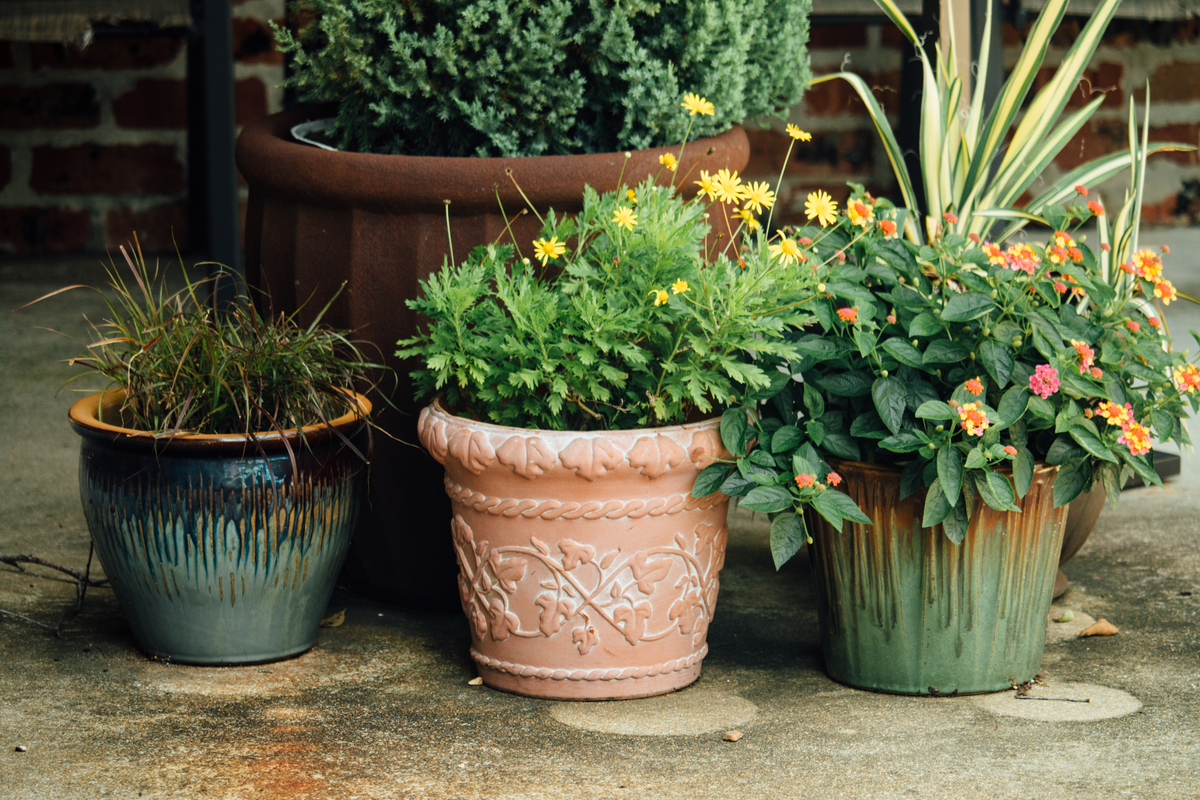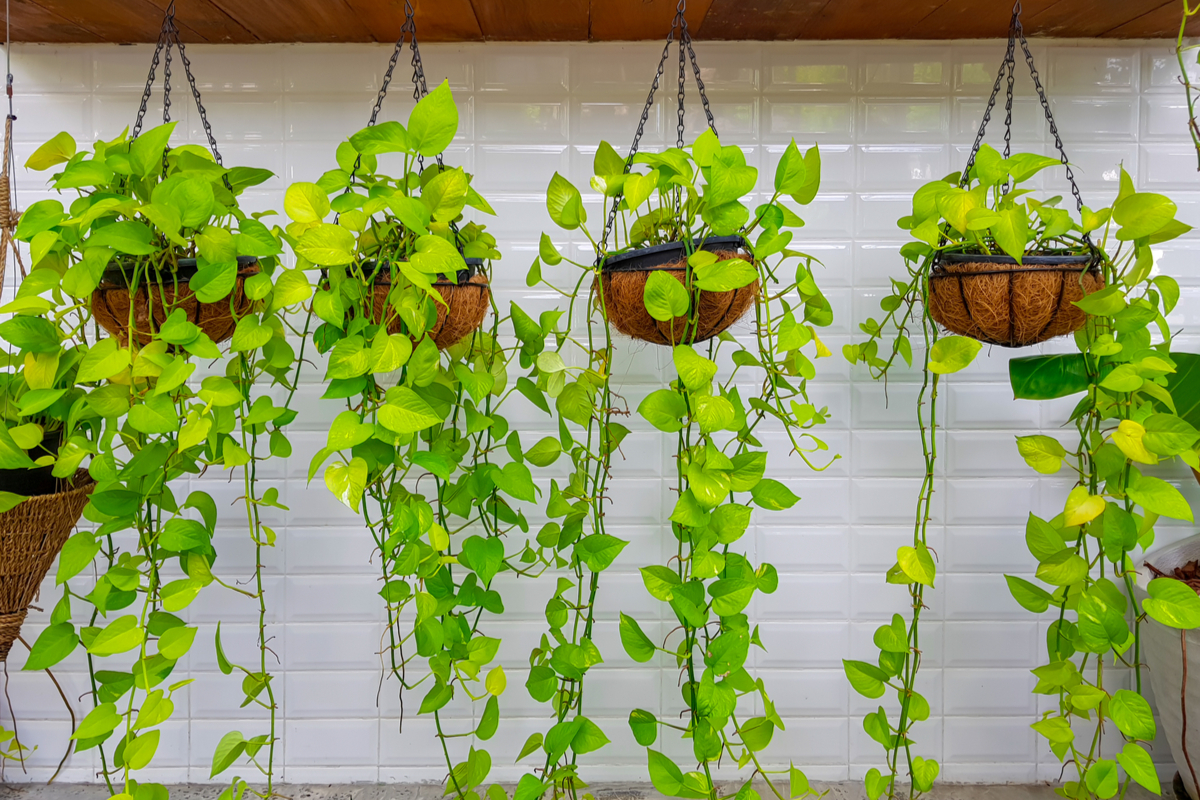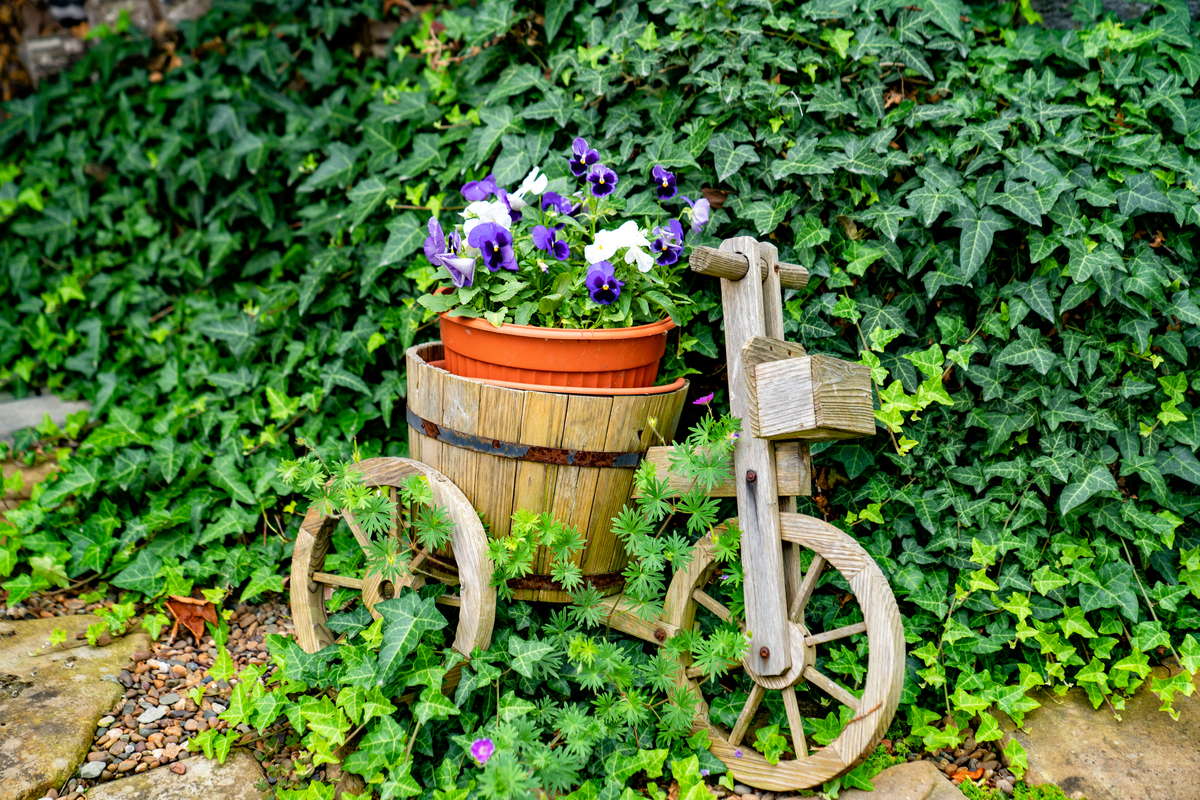Having planters on your porch is a great way to keep plants outside during warmer months. They’re cute, bring life to a smaller outdoor space, and come in many shapes and sizes. But did you know deck gardening containers can damage your porch? Many don’t think of it when selecting the perfect pot, so they don’t think about how to protect their deck from planters properly. Let’s go over the ways planters damage your porch and how you can prevent and protect from future destruction.

How planters can damage your porch
If you aren’t careful, your deck gardening containers will cause more harm than joy. When planters aren’t properly elevated off the porch, water can collect underneath them. This extends even when the pot has a tray — sometimes water drains into the tray, spills over the edge, and sits underneath and around the pot. After time, the stale water could stain your deck and eventually cause mold, mildew, and rot to form in the wood.
This is often caused by a lack of elevation. If the pots, planters, or other deck gardening containers aren’t lifted off your deck, air won’t be able to flow underneath. If air can’t get under, the wood won’t have a chance to dry out, which means every time you water the plant and it overflows, you’re causing more moisture to get trapped and soak into the wood.
Ways to prevent damage from planters
In order to avoid extensive repairs to the deck, you can simply use pot risers or plant stands beneath your containers that will allow air to get under them and properly dry out the deck. This is the best option if you’re renting a space and aren’t able to do a water-sealing treatment on the wood. And even if you can, it only helps so much. The best safeguard against planter-related damage is elevated containers.
Aside from planter feet, pot risers, and plant stands, there are other ways you can help prevent planter-related damage to your deck. Although plant risers and stands help solve the issue, you may find your deck feeling crowded and overrun with plants that you can’t keep anywhere but on the plant stand. We’re here to tell you: That’s not the case.

Hang your planters and utilize railings
Your best option to avoid damage all together is to hang your planters! Unfortunately, most apartment/rented spaces that have a patio or deck don’t have much space to do so, so you’ll have to do a mix of hanging and using stands. (And really, the benefit of doing both is that you’ll have a more dynamic porch space.) Hanging your plants will still bring beautiful greens and flowers onto your deck while minimizing the amount of water that collects on the wood.
The same result can be achieved with deck railing boxes if you have railings to put them on! They lift the deck gardening container off the deck itself, attaching to the railing and allowing the water to drain and dry naturally. Water won’t collect under these boxes on the railings, so you won’t have to worry about them getting moldy.
When using hanging planters and deck railing boxes, the most ideal scenario is to set them up in a way that water drips onto the ground. For railing boxes, you can set them up on the outside of the railing instead of the inside and the water will fall onto the dirt instead of the deck. For hanging planters, that may not be as possible depending on where you live. Try to set up as many as you can so that they hang over the ground (they make hooks you can use).
Bring them indoors in the winter
If you have year-round plants, this is a must for keeping them alive through to the next spring. But even if the plants in your planters die come winter, you should still bring the pots inside. As snow falls and melts, the water will collect under any empty planters left on the porch, posing the same issue of mold, mildew, and rot. Come spring, your deck will have more damage than it did last fall, and you’ll find yourself needing to spend money on repairs.
Of course, if you still have live plants that you plan to overwinter, leaving them outside in the snow will likely kill them. Bring them inside and place them in their respective spots. Remember: Not all plants like the same conditions, so they don’t all need full winter sun, but it’s best to keep them away from drafty areas.

Move your planters regularly
Rotating the location of your planters on your deck can help keep one spot from getting too wet at any given time. This is best achieved by moving your planters to new places each time (as opposed to moving a pot directly where another pot was). If you don’t have a large enough deck or patio for this method, simply elevating your deck gardening containers with feet and stands will suffice.
If you are able to move them around, consider getting elevated trays that have wheels or select stands that are mobile. This will help you change their location more easily and keep you from having to lift or drag that one plant that’s just gotten too heavy. It will also make bringing them inside in the winter a bit nicer, too. Ideally, you should rotate them once a week so that the wood doesn’t get too wet and has a chance to dry out; however, any amount of rotation is better than none, whether that’s once a week or once a month.
By utilizing hanging planters, railing boxes, plant stands, and tray risers, you’ll be able to prevent your deck from rot to the best of your ability. No one likes mold, mildew, or rot, and your deck (and plants!) will thank you for the attentive care.
Want more? Learn how to start a back porch garden in 5 easy steps!
Editors' Recommendations
- A beginners guide on what to grow in your greenhouse for a thriving garden
- Small greenhouse tips: 5 ways to make the most of limited space
- Do you need a fence for your garden? What you need to know before deciding
- What you need to know about growing sugar snap peas in containers
- How to build an outdoor kitchen on a budget and create the ideal cooking space


